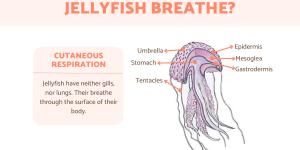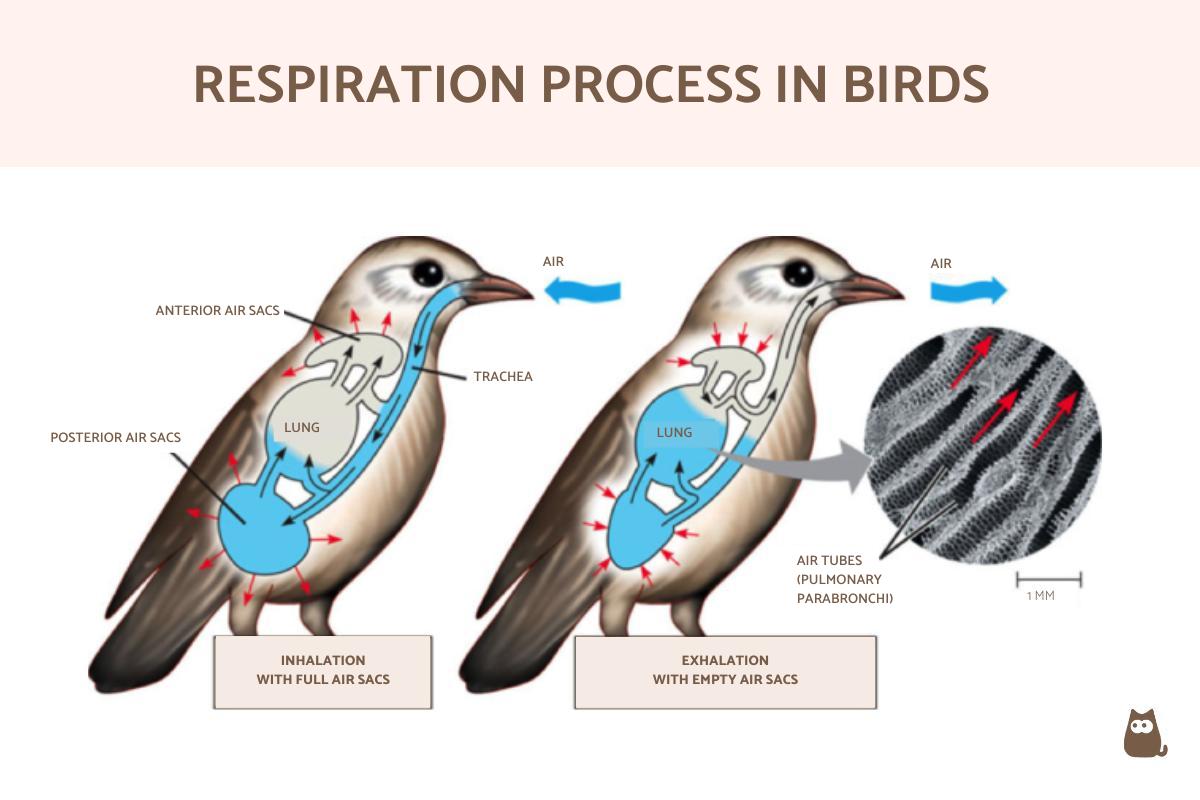How Do Birds Breathe?


Birds are some of the most fascinating organisms in the animal kingdom. Although they are not the only animal to fly, their ability to do so allows for unique migratory behaviors and other impressive abilities. They also have a diversity and beauty in their appearance which has inspired naturalists since they were first studied. Other fascinating characteristics are less obvious, such as their close evolutionary relation to dinosaurs. With such diversity in terms of morphology and behavioral characteristics, in can be easy to forget they are animals with vital bodily functions, just as with any animal.
It is for this reason AnimalWised learns more about this incredible animal by finding out how do birds breathe? We learn how bird respiration is possible by looking at bird anatomy and other factors which explain how birds breathe.
The respiratory system of birds
Although there is incredible diversity among all the different types of vertebrate animals, there are some fundamental similarities. Oner such similarity is that they all need to carry out some type of respiration. Although they all have the ability to breathe, they do not all do it in the same way. There are many reasons for this, often related to habitat. For example, it is understandable fish will breathe differently to terrestrial animals.
Although the respiratory system fulfills the primary function of respiration in birds, it is adapted specifically to their needs. Since most birds fly, this system needs to be light so they have less density for lift. The respiratory system is also vital for thermoregulation, vocalization and other important functions. It also regulates their acid balance and oxygenates the blood, processes without which the animal could not survive.
Characteristics of the respiratory system of birds
In order to understand how birds breathe, we are going to look at some of the key characteristics of bird respiration. They include:
- After around the 19th day of incubation, birds will carry out pulmonary respiration, i.e. they use lungs to breathe.
- Before developing lungs, fledgling birds undergo a type of respiration in which oxygen diffuses through the egg and reaches the blood system of the embryo via the chorioallantoic membrane.
- They have much shorter nostrils than mammals.
- They breathe indistinctly through the nose or the mouth.
- The larynx is made up of three cartilages, which are known as the arytenoid, prearytenoid and cricoid.
- They lack vocal cords.
- The trachea is almost 3 times as long and 2 times as wide as in mammals.
- They lack a developed diaphragm.
- Air circulation occurs thanks to the movement of the respiratory muscles and the increase in the volume of the respiratory sacs.
- The air reaches the lungs in a unidirectional way.
- They have three types of bronchi, primary, secondary, and tertiary. The primary bronchi branch into the secondary bronchi, with the function of both being to transport air. The functional units of gas exchange are the tertiary bronchi or parabronchi.
- Bird lungs do not have the expansive capacity of mammals.
- An epithelial tissue is located in the parabronchi which communicates with rigid blood capillaries where gas exchange is completed.
- In the upper airways, birds lack immunological protectors, so they are particularly sensitive to pathogens.
The characteristics of the avian respiratory system make it much more efficient than that of many other animals thanks to its anatomical and physiological adaptations. This breathing system is so optimized, there are reports of birds flying on Mt. Everest, the highest peak in the world at 9,000 m above sea level. Humans traveling to this altitude need to do so gradually to acclimatize to these low-oxygen conditions.
Although many birds can fly to great heights, not all have this ability. Learn more with our article on types of flightless birds.
From where do birds breathe?
Developed birds breathe through their lungs, thanks to the entry of air through the mouth or nose. Before full development, embryonic birds breathe because air passes through the egg shell and then through the chorioallantoic membrane, until oxygen reaches the blood.
The anatomy of a bird's respiratory system is such that the passage of air is unidirectional. Its flow remains almost constant, something very important fir birds when they are midflight. This is especially so when they are traveling over long distances.
What are the air sacs of birds like?
Air sacs are internal spaces within a bird where air is maintained and manipulated. They are separate from, but connected to the lungs. The evolutionary process of birds caused their air sacs to be widely developed and help to supplement respiration. They are located in an anterior and posterior position in these animals, due to an expansion of the caudal region of the lungs.
In this way, the air sacs of birds are made up of connective tissue, characterized by having a large number of elastic fibers. They are thin and act similarly to a type of bellows. Although they play an important role in the respiratory cycle, they do not intervene in the gas exchange since they are not vascularized.
As we have stated above, the respiratory system of birds helps them to thermoregulate. This is thanks to the air sacs. They do so by cooling the air within the lungs via evaporation. So, when the temperature increases, they can circulate cooled air to prevent themselves from overheating.
Now we have learned about how birds breathe when in the air, you may want to learn more about how animals breathe underwater with our article on how whales breathe.

How do birds breathe?
The breathing process in birds begins with the inspiration of air, either through the mouth or nose. The air continues through the trachea before entering the syrinx, the vocal organ of birds. At this point, there is a tracheal bifurcation since there are two primary bronchi, one for each lung. They then further diverge thanks to traveling into the secondary bronchi.
Subsequently, the freshly inhaled air first reaches the posterior air sacs. From there it passes to the parabronchi within the lungs, where the gas exchange between oxygen (O2) and carbon dioxide (CO2) actually occurs. As air is taken in by the bird's inhalation, the posterior air sacs expand and air flows from the lungs to the anterior sacs to be exhaled outside the animal.
The entire respiratory process occurs mainly by muscle contraction that occurs near the ribs and sternum of birds. For the entire respiratory cycle to be completed, two inhalations and exhalations must occur. On the first inhalation, air moves to the posterior respiratory sacs, and on the first exhalation, to the lungs. On the second inhalation, it reaches the previous sacs and when the second exhalation occurs, the air leaves the body.
Breathing is not the only essential organic process in birds. So too is diet, a topic about which you can learn more by looking at our articles on seed predation in birds and our list of carnivorous birds.
If you want to read similar articles to How Do Birds Breathe?, we recommend you visit our Facts about the animal kingdom category.
- Scientific culture notebooks. (2017). The lungs of reptiles and birds. Retrieved from: https://culturacientifica.com/2017/10/24/sistemas-respiratorios-los-pulmones-reptiles-aves/
- Hickman, C., Roberts, L., & Parson A. (2000). Comprehensive principles of zoology. McGraw Hill Interamericana.
- Sanmigel, R.. &Peñuela, L. (2012). A review of the particularities of the avian respiratory system. Retrieved from: https://revistas.ucc.edu.co/index.php/sp/article/download/97/98/






